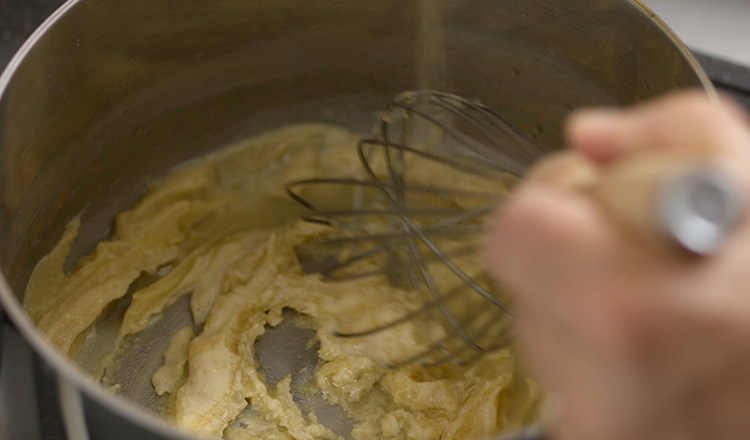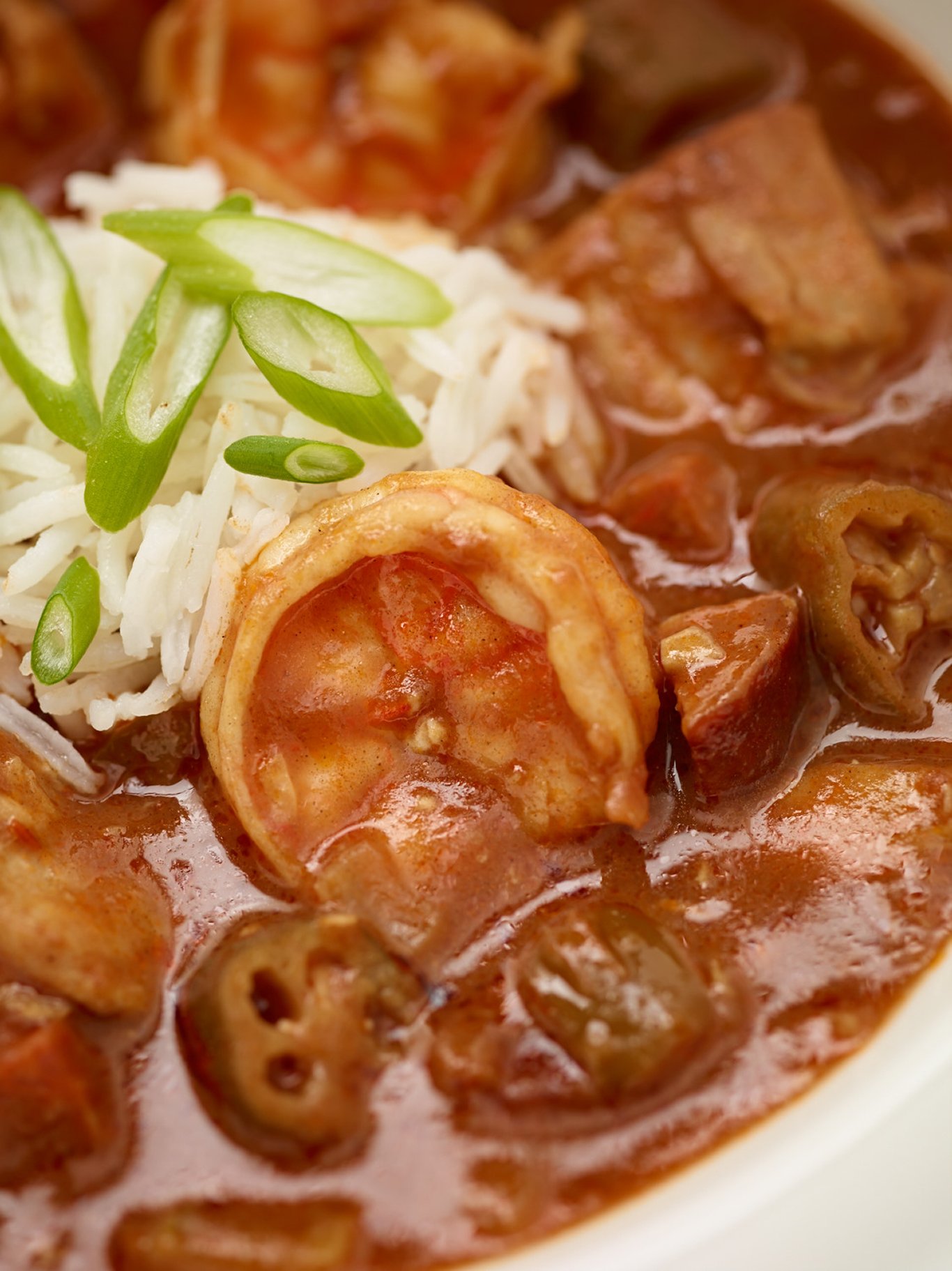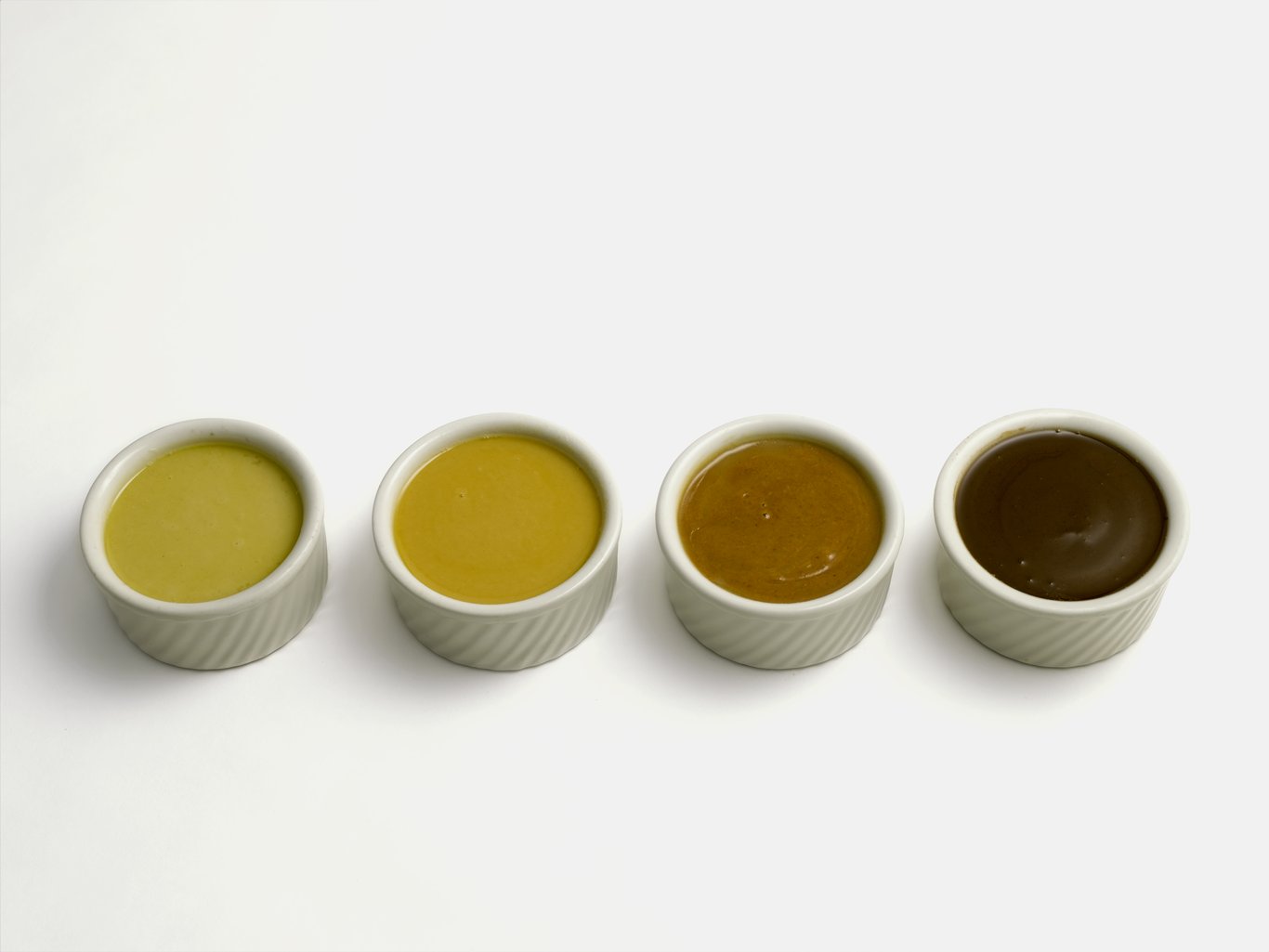
If you’re feeling the spirit of Mardi Gras, you may be inspired to try your hand at a Cajun or Creole recipe, like gumbo or shrimp etouffee.

The key to many of these flavorful, complex dishes is the roux, a cooked flour and fat mixture that thickens, colors, and flavors a number of your favorite dishes.
Roux thickens sauces, soups, and stews and lends those dishes a special flavor. Cooking flour in fat before using to thicken renders inactive an enzyme that, if not destroyed by high heat, interferes with the flour’s thickening ability. Cooking flour also changes the flour’s raw cereal taste to a toasty or nutty flavor. Both the flavor and the color become deeper the longer the roux cooks.
In addition to thickening a dish, roux will change the color of a sauce and, if a dark roux is used, lend it a nutty or toasted flavor. For example, dark roux is particularly important in Creole and Cajun cuisines, where it gives gumbos and stews their unique character. Another advantage of using roux is that the starches present in the flour do not break down as easily as some others, creating a more stable thickened sauce.
Roux can be prepared with any type of white wheat flour; however, the most desirable is all-purpose flour due to its starch content.
Clarified butter is the most common fat used for making roux, but whole butter, vegetable oils, rendered chicken fat, or other rendered fats may also be used. Each fat will influence the finished dish’s flavor.
To make a roux, heat the fat over medium heat and add the flour, stirring to combine. The basic formula for a roux is 60 percent flour to 40 percent fat (by weight). The roux should be very smooth and moist, with a glossy sheen—not dry or greasy. It should look like “sand at low tide.” Adjust the roux’s texture by adding more flour or fat.
Stir the roux as it cooks to keep it from scorching and continue to cook it to the desired color. To reduce the chances of scorching, large quantities of roux may be placed in a moderate oven (350° to 375°F) to complete cooking.
The four basic colors of roux are white (barely colored or chalky), blond (golden straw color with a slightly nutty aroma), brown (deep brown with a strong nutty aroma), and dark (dark brown with a pronounced nutty flavor and aroma).

Once the roux is cooked to its desired doneness, it is ready to use, or it may be cooled and stored for later use.
Roux can be combined with liquid in three ways. Cool roux may be added to hot liquid, cool liquid may be added to hot roux, or warm roux may be added to liquid of the same temperature. For any approach, though, follow these general guidelines:
- Avoid temperature extremes to prevent lumping.
- Cool or room temperature roux can be incorporated into hot liquid more easily than ice-cold roux because the fat is not as solid.
- Very cold liquid should not be used, as it will initially cause the roux to harden.
- Extremely hot roux should be avoided, because it may spatter when combined with a liquid and cause serious burns.
The full thickening action of the roux becomes evident when the liquid has reached approximately 200°F. Long-cooking sauces and soups are further thickened through reduction.
